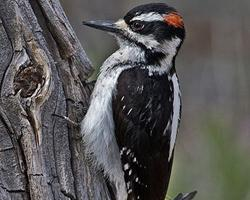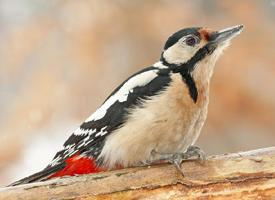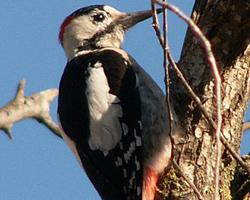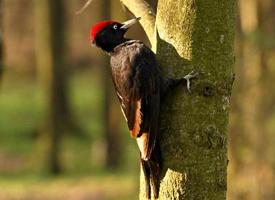
Váhy a míry
| Délka | od 18 do 26 cm |
|---|---|
| Hmotnost | od 40 do 95 g |
| Délka rozpětí křídel | od 33 do 41 cm |
Stav ohrožení
| Neohrožen |
Popis zvířete
The Hairy Woodpecker (Leuconotopicus villosus) is a captivating bird species renowned for its distinctive appearance and behavior, belonging to the family Picidae. This medium-sized woodpecker is native to North America, widely distributed across forests, woodlands, and suburban areas, showcasing its adaptability to various habitats.Characteristically, the Hairy Woodpecker possesses a striking black and white plumage that serves as an effective camouflage against the bark of trees. The back is predominantly black, adorned with a white patch that runs down the center, providing a sharp contrast. Its wings are checkered with black and white, adding to its distinctive pattern. The underparts are primarily white, extending from the throat down to the belly, offering a stark contrast against its darker features.
One of the most notable features of the Hairy Woodpecker is its bill, which is almost as long as the bird's head, robust and chisel-like, perfectly adapted for its wood-boring diet. This powerful tool is used to excavate deep into the wood of trees to extract insects and their larvae, primarily beetles, ants, and caterpillars, which constitute its primary diet. The bird's tongue is long, barbed, and sticky, specially adapted to extract prey from deep crevices.
The Hairy Woodpecker exhibits sexual dimorphism, albeit subtly. Males can be distinguished by a patch of red on the back of their head, which is absent in females. Both sexes, however, share the same overall plumage pattern, which aids in their identification.
This bird's size is another distinguishing factor; it measures approximately 18 to 26 centimeters in length, with a wingspan ranging from 33 to 41 centimeters. Despite its somewhat bulky appearance, the Hairy Woodpecker is an agile flier and an adept climber. Its tail is stiff and supports the bird as it maneuvers vertically along tree trunks, probing for food.
The Hairy Woodpecker's call is a sharp "peek" sound, often repeated, serving as a communication tool among individuals. Its drumming on tree trunks, a rapid series of taps, is not only a foraging behavior but also plays a role in territorial and mating displays.
Breeding season sees these birds exhibiting monogamous behavior, with pairs often remaining together in their territory year-round. They nest in cavities, which they excavate in tree trunks, laying a clutch of 3 to 6 white eggs. Both parents share in the incubation duties and in feeding the altricial (helpless) chicks until they are ready to fledge.
The Hairy Woodpecker plays a critical role in its ecosystem, aiding in pest control by consuming wood-boring insects, and creating nesting sites for other species through its excavation activities. Despite facing threats from habitat loss and fragmentation, the Hairy Woodpecker remains widespread and is listed as Least Concern by the IUCN, highlighting its current stable population status. Its resilience and adaptability make it a fascinating subject of study and a beloved sight for bird enthusiasts across its range.
Podobná zvířata
Nové fotografie zvířat
Top 10 zvířat
- Chinese water dragon (Physignathus cocincinus)
- Galápagos tortoise (Geochelone nigra complex)
- Dolphin gull (Leucophaeus scoresbii)
- Japanese macaque (Macaca fuscata)
- Colombian red howler (Alouatta seniculus)
- Sea urchins (Echinoidea)
- Moustached guenon (Cercopithecus cephus)
- Diana monkey (Cercopithecus diana)
- Common reed warbler (Acrocephalus scirpaceus)
- Common house mosquito (Culex pipiens)


